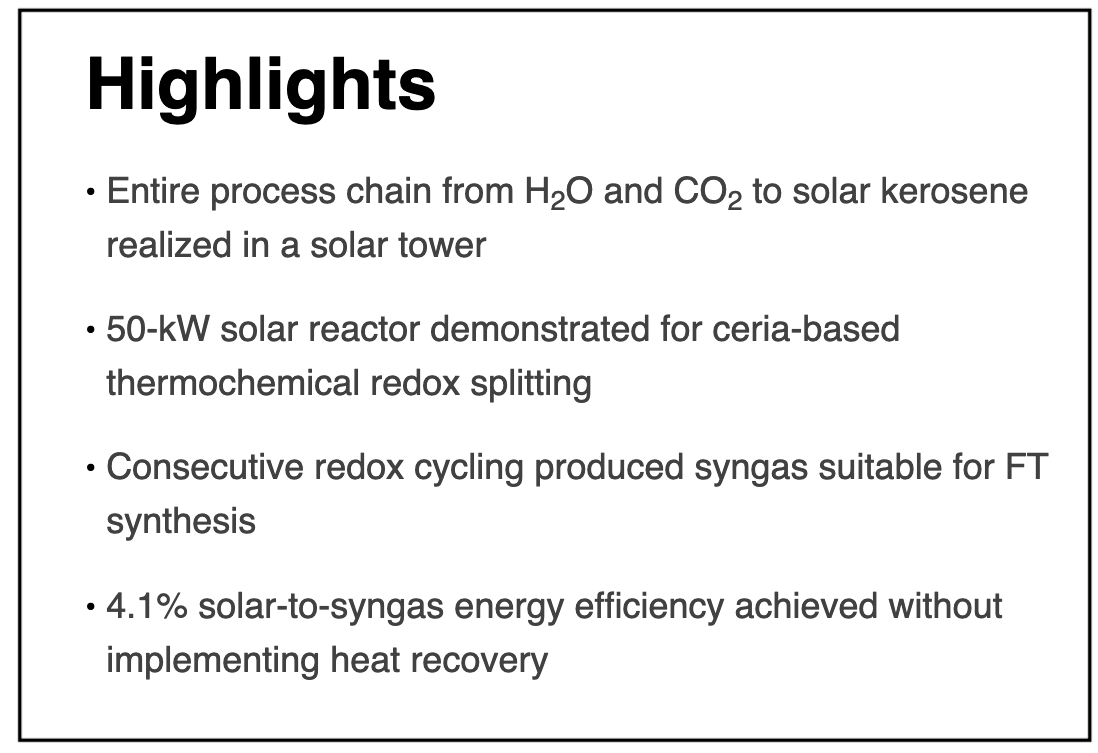
Summary:
Developing solar technologies for producing carbon-neutral aviation fuels has become a global energy challenge, but their readiness level has largely been limited to laboratory-scale studies. Here, we report on the experimental demonstration of a fully integrated thermochemical production chain from H2O and CO2 to kerosene using concentrated solar energy in a solar tower configuration. The co-splitting of H2O and CO2 was performed via a ceria-based thermochemical redox cycle to produce a tailored mixture of H2 and CO (syngas) with full selectivity, which was further processed to kerosene. The 50-kW solar reactor consisted of a cavity receiver containing a reticulated porous structure directly exposed to a mean solar flux concentration of 2,500 suns. A solar-to-syngas energy conversion efficiency of 4.1% was achieved without applying heat recovery. This solar tower fuel plant was operated with a setup relevant to industrial implementation, setting a technological milestone toward the production of sustainable aviation fuels.
Stefan Zoller,1 Erik Koepf,1,* Dustin Nizamian,1 Marco Stephan,1 Adriano Patane ́ ,1 Philipp Haueter,1 Manuel Romero,2 Jose ́ Gonza ́ lez-Aguilar,2 Dick Lieftink,3 Ellart de Wit,3 Stefan Brendelberger,4 Andreas Sizmann,5 and Aldo Steinfeld1,6,*
Read the full paper at Joule (Open Source) or access it here: A solar tower fuel plant for the thermochemical production of kerosene from H2O and CO2














































